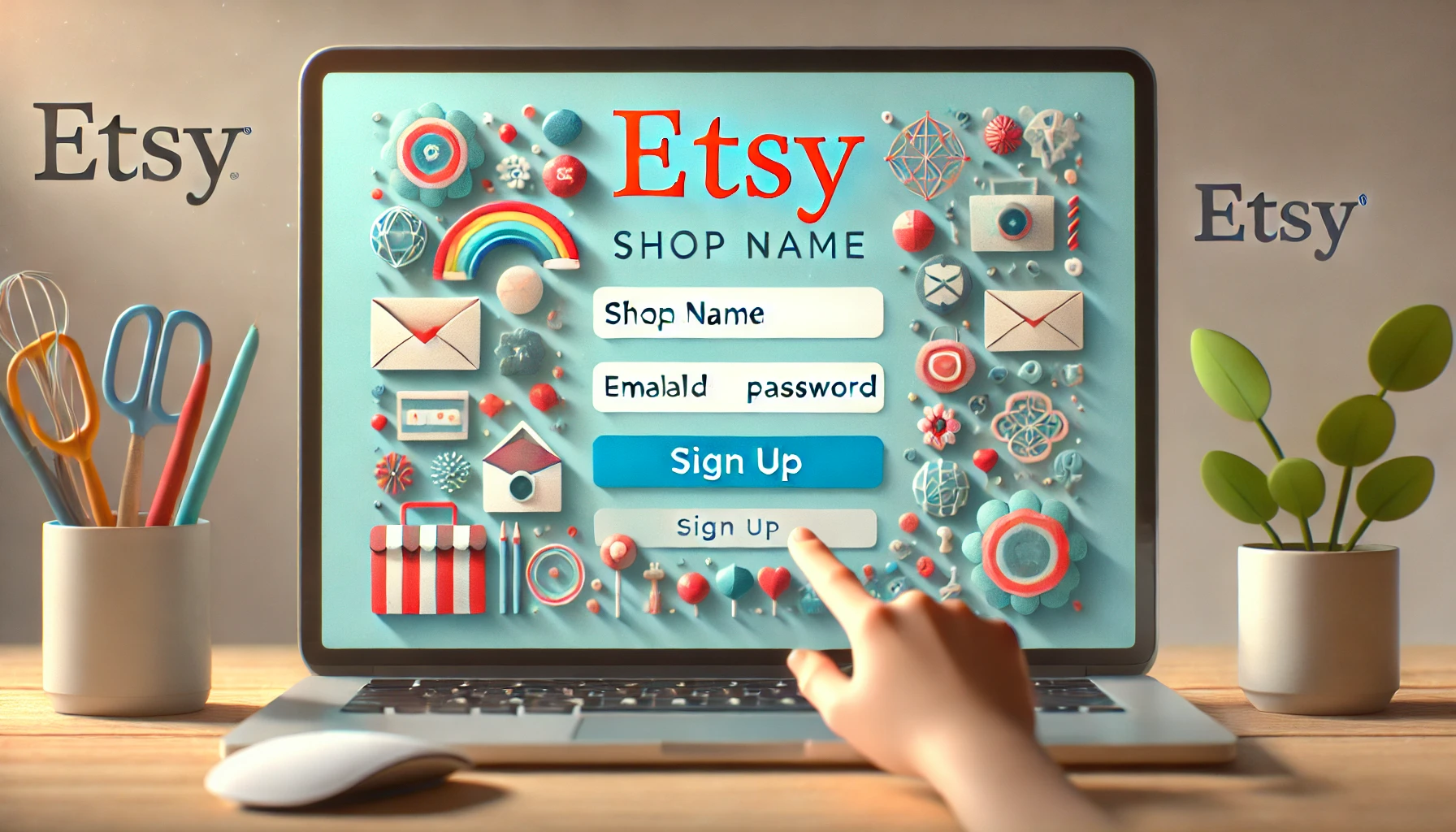Want to turn your passion into profit by opening your own Etsy shop? Whether you’re a seasoned crafter or just getting started, this guide will walk you through the steps to launch your shop and set yourself up for success. From creating your first listing to understanding how to price and market your products, you’ll learn everything you need to know.
Let’s get started on the journey to building your dream Etsy shop!
Setting up your Etsy shop
Creating your Etsy account
- Sign up and set up your seller profile.
- Pro Tip: Choose a shop name that reflects your brand and is easy to remember.

Filling out shop policies
- Define your shipping, returns, and payment policies.
- Pro Tip: Transparent policies help build trust with customers.

Creating your first listing
Crafting a standout product title and description
- Use descriptive language with relevant keywords.
- Explain how the product solves a problem or fulfills a need.
- Pro Tip: Include materials, size, and any unique features in the description.

Uploading high-quality product images
- Use clear, well-lit photos that show the product from multiple angles.
- Pro Tip: Include at least one lifestyle image showing the product in use.
Pricing your products
Determining your pricing strategy
- Factor in material costs, time, and market trends.
- Pro Tip: Research similar products to avoid overpricing or underpricing.
Offering discounts and promotions
- Use promotions to attract new customers or during special occasions.
- Pro Tip: Offer free shipping or bundle deals for an added incentive.
Marketing your Etsy shop
Utilizing Etsy SEO to boost visibility
- Include relevant keywords in your titles, descriptions, and tags.
- Pro Tip: Use long-tail keywords for specific searches to stand out.
Leveraging social media to drive traffic
- Share your listings on Instagram, Pinterest, and Facebook.
- Pro Tip: Create behind-the-scenes content to engage with your audience.
Handling shipping and fulfillment
Choosing your shipping strategy
- Decide between Etsy shipping labels or your own provider.
- Pro Tip: Offer free shipping by building the cost into your product price.
Packaging your products
- Invest in professional-looking, eco-friendly packaging to enhance the unboxing experience.
- Pro Tip: Include a thank-you note or coupon to encourage repeat business.
The pros and cons of selling on Etsy
Pros of selling on Etsy
- Large customer base and niche-focused platform.
- Etsy handles payment processing and offers built-in traffic.
- Pro Tip: Etsy’s marketplace is ideal for artisans and crafters, with access to global customers.
Cons of selling on Etsy
- Competition can be fierce, especially in popular categories.
- Etsy fees can add up (listing fees, transaction fees, payment processing fees).
- Pro Tip: Make sure to factor in all fees when pricing your products.
FAQ
Do I need a business license to sell on Etsy?
Answer: It depends on your location and the type of products you're selling. Research local regulations to ensure compliance.
How much does it cost to start an Etsy shop?
Answer: It’s free to create an Etsy account, but you’ll pay a $0.20 fee per listing, plus transaction and payment processing fees.
How can I stand out in a competitive category?
Answer: Focus on high-quality product photos, detailed descriptions, and excellent customer service. Regularly update your listings and engage with your audience on social media.
Next up
With your shop set up and your products ready to sell, you’re all set to embark on your Etsy journey! Keep refining your listings and marketing strategy, and remember that success takes time. Next, explore strategies for growing your Etsy shop by improving your branding, expanding your product range, and connecting with your audience.